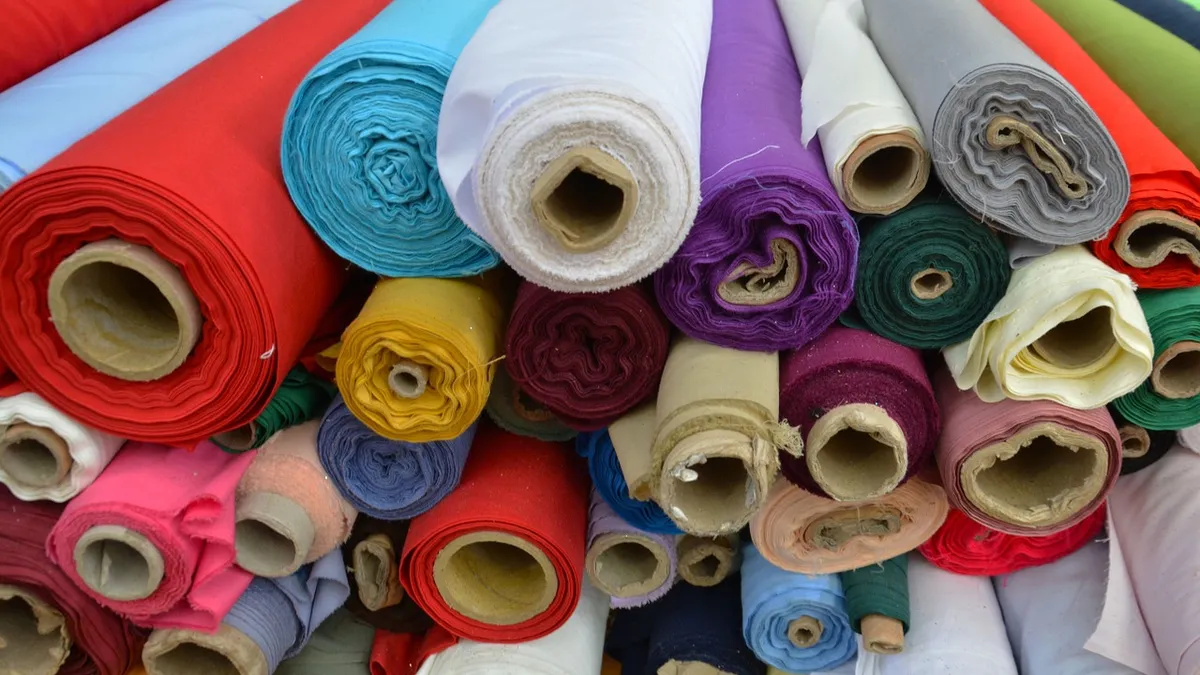Dive Brief:
- Overall textile imports into the United States were almost 8% higher this May compared to the same month a year earlier, according to new data from the Department of Commerce. Source location of the textiles is changing as U.S. companies look to avoid tariffs on Chinese goods.
- Imports from China did grow more than 7% year-over-year (YoY) in May, but imports from other countries saw larger jumps as well. Imports from India and Vietnam jumped more than 12%, while South Korean imports were up 22% and Cambodian imports rose nearly 28%.
- "This is most definitely a response to the tariffs," Robert Handfield, a supply chain management professor at North Carolina State University, told Supply Chain Dive in an email.
Dive Insight:
China is still the number one source of textiles heading into the U.S. by a wide margin. May imports from China were five times larger than the second largest source country, India. Handfield said it was surprising the trade war hasn't had a larger impact on Chinese sourcing.
The fact that sourcing from China continues to increase is a sign companies may be looking to diversify their sourcing rather than move it fully out of China — a task many companies have described as impractical.
| Country | May 2018 imports (Million Square Meters) | May 2019 imports | % change |
|---|---|---|---|
| China | 2,630.8 | 2,826.1 | 7.4 |
| India | 498.2 | 559.8 | 12.4 |
| Vietnam | 438.1 | 493.2 | 12.6 |
| Pakistan | 242 | 249.5 | 3.1 |
| Mexico | 224.8 | 240.8 | 7.1 |
| Bangladesh | 208.8 | 214.9 | 2.9 |
| South Korea | 165 | 201.8 | 22.3 |
| Indonesia | 124.8 | 130.9 | 4.9 |
| Cambodia | 71.8 | 91.7 | 27.8 |
| Honduras | 93.4 | 96.8 | 3.7 |
SOURCE: Department of Commerce
Growth in Chinese textile imports is slightly smaller if viewed as the first five months of the year rather than just May. Between January and May 2019 imports from China rose 2.4% compared to the same period of time in 2018, while imports from South Korea rose 24% in this time and India increased by 16%.
These shifts started to appear in 2018, when imports from South Korea and Cambodia increased significantly.
"The Commerce Department data bear out exactly what we expect as a result of tariffs," Institute for Supply Management CEO Tom Derry told Supply Chain Dive in an email. "Textiles are one of the world’s most portable and lowest-tech industries."
Moving sourcing or production to other low labor cost countries allows importers to avoid the country of origin tariffs, Derry said. Some Chinese exporters have repackaged goods to look as though they come from Vietnam or another country not affected by tariffs. This is something Vietnam has said it is trying to crack down on, according to Reuters.
Handfield said Bangladesh, from which textile imports rose almost 3% YoY in May, was one surprise in the data.
"I thought perhaps they would enjoy more of this growth," he said. "However, people are still a bit dubious about Bangladesh after Rana Plaza, and I feel like there will be more growth here in the next year."















